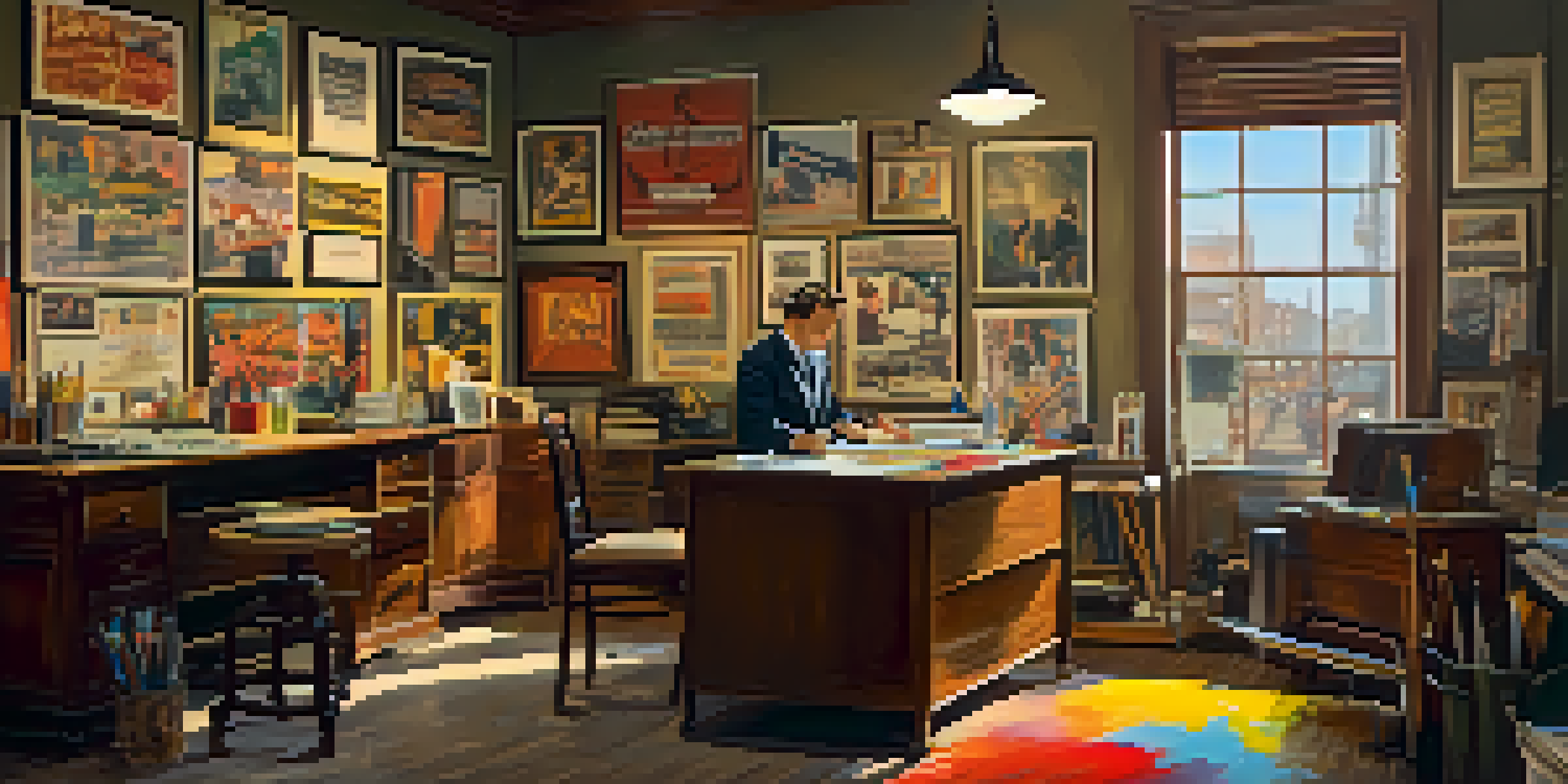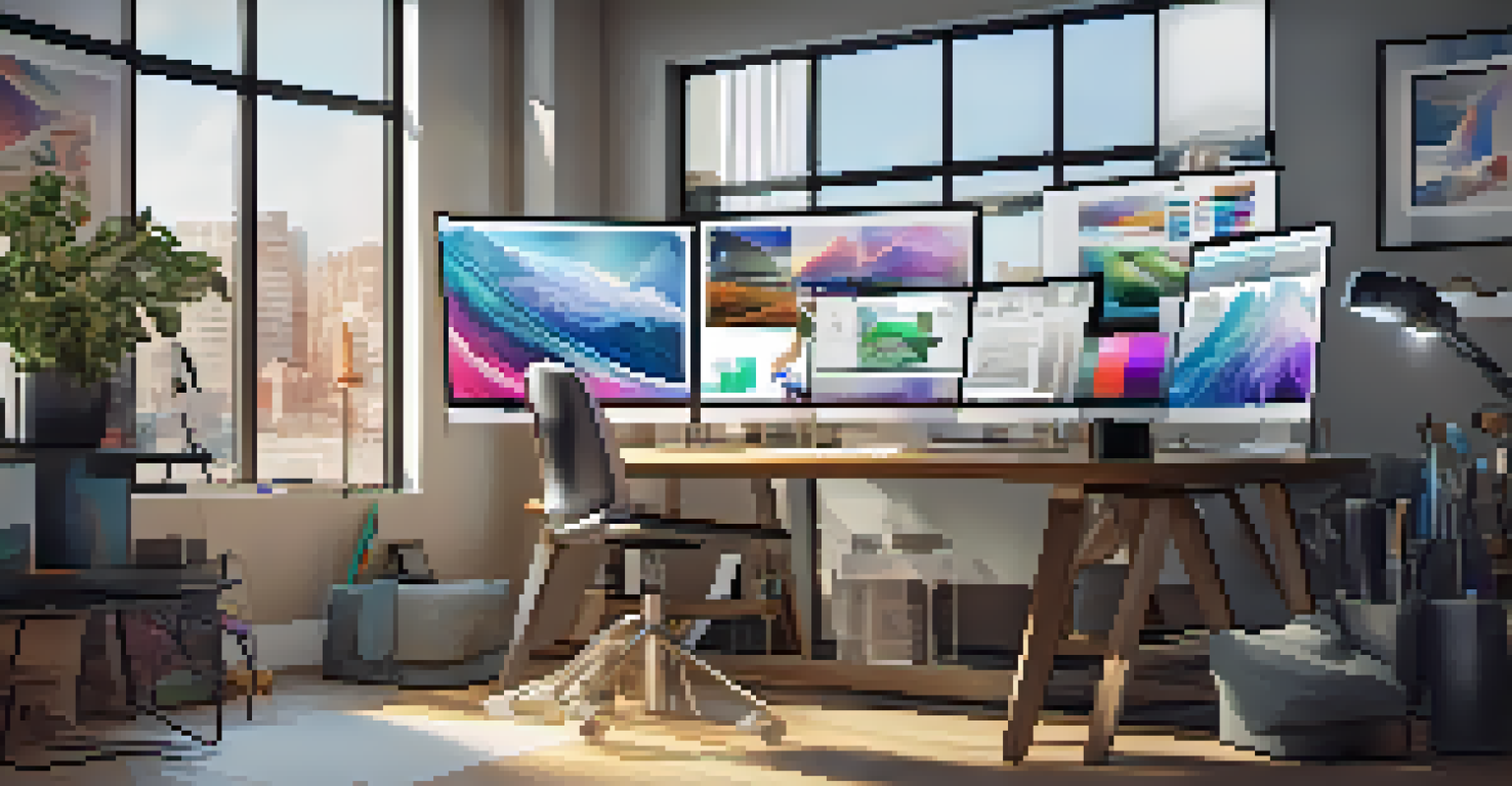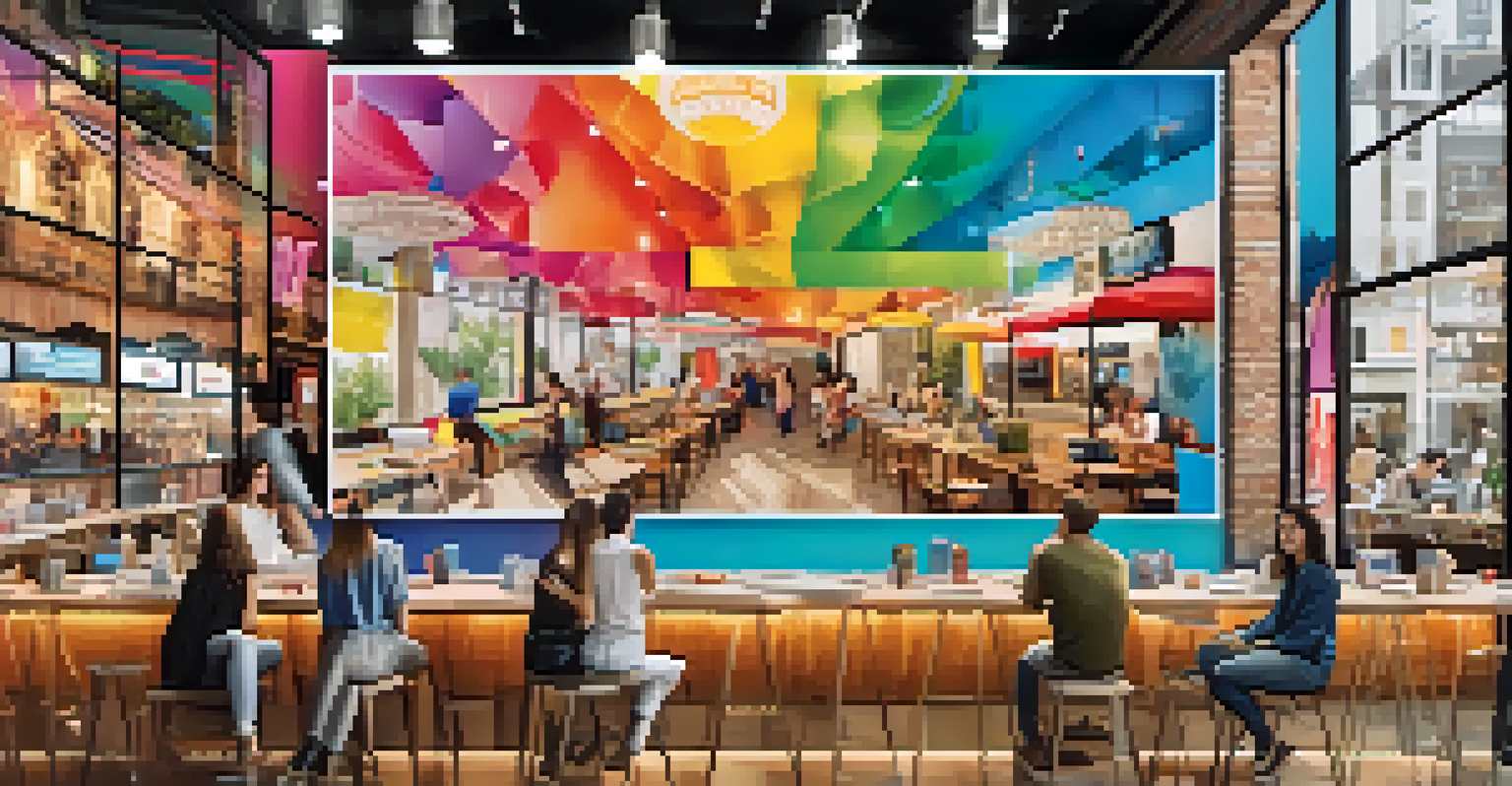Art and Advertising: The Evolution of Visual Marketing

The Roots of Art in Advertising: A Historical Perspective
Art has been intertwined with advertising since the very beginning. From ancient civilizations using painted signs to promote goods to the first printed ads in newspapers, visual marketing has always relied on aesthetics to capture attention. These early forms of advertising utilized bold colors and striking images to entice potential customers and convey messages quickly.
Art is not what you see, but what you make others see.
As societies evolved, so did the techniques of visual marketing. The Industrial Revolution marked a significant shift, leading to mass production and the need for more sophisticated advertising strategies. Artists began to collaborate with brands, creating eye-catching posters and billboards that combined art with persuasive messaging, laying the groundwork for modern advertising.
Today, we can trace the lineage of visual marketing back through these artistic contributions. Understanding this history helps us appreciate how far advertising has come, and it reminds us that the fusion of art and commerce is a long-standing tradition that continues to evolve.
The Golden Age of Advertising: Art Meets Commerce
The mid-20th century is often referred to as the Golden Age of Advertising, marked by a surge of creativity and innovation. This era saw the rise of famous advertising agencies that employed talented artists and designers to create visually stunning campaigns. Iconic works, like the 'I Love New York' logo, became symbols of effective marketing and artistic expression.

During this time, advertising shifted from merely promoting products to building brand identities. Advertisers started to understand the emotional connection consumers had with art, using it to evoke feelings and create memorable experiences. The combination of visual appeal and storytelling became a powerful tool in persuading audiences.
Art's Historical Role in Advertising
Art and advertising have been intertwined since ancient times, evolving from simple painted signs to sophisticated visual marketing strategies.
This period not only transformed advertising but also influenced popular culture. Many artists of the time found new platforms in advertising, allowing them to reach wider audiences and expand their creative horizons, ultimately blurring the lines between art and advertising.
Modern Visual Marketing: The Digital Revolution
With the advent of the internet, visual marketing underwent a significant transformation. Digital platforms opened up new avenues for creativity, allowing brands to engage with consumers in ways previously unimaginable. Social media, in particular, became a playground for visual storytelling, where artistic content could go viral and reach millions overnight.
The best advertising is done by satisfied customers.
Today, marketers leverage graphic design, photography, and video to create compelling visual narratives. The incorporation of interactive elements, such as GIFs and augmented reality, adds another layer of engagement, making ads more dynamic and immersive. This evolution reflects a deeper understanding of audience behavior and preferences, ultimately enhancing the effectiveness of marketing campaigns.
Moreover, analytics play a crucial role in modern visual marketing, enabling brands to tailor their artistic approaches based on real-time feedback. This data-driven strategy allows companies to create highly relevant and personalized content that resonates with their audience, showcasing that art and advertising are now more interconnected than ever.
The Role of Art in Brand Identity Formation
Art plays a pivotal role in shaping brand identity. From logos and color schemes to overall design aesthetics, every visual element contributes to how a brand is perceived by consumers. A well-crafted visual identity not only communicates the essence of a brand but also fosters recognition and loyalty.
For instance, think of brands like Apple or Coca-Cola; their unique designs evoke specific emotions and associations. This connection is built through consistent and thoughtful visual marketing strategies that resonate with target audiences. As a result, art becomes a powerful vehicle for conveying brand values and messages.
Digital Revolution Transforms Marketing
The rise of digital platforms has revolutionized visual marketing, enabling brands to create engaging narratives and interactive experiences.
In an increasingly competitive marketplace, investing in artistic branding can set a company apart. Brands that prioritize creativity in their advertising not only attract attention but also create lasting impressions, ensuring they remain top-of-mind for consumers.
The Fusion of Art and Technology in Advertising
As technology continues to advance, the fusion of art and technology in advertising is becoming more pronounced. Tools like graphic design software and animation programs empower artists to push the boundaries of creativity and innovation. This synergy allows for the creation of visually stunning and highly engaging advertisements that captivate audiences.
Moreover, the rise of artificial intelligence and machine learning is revolutionizing the way brands approach visual marketing. These technologies can analyze consumer data to predict trends and preferences, enabling marketers to create tailored visual content that resonates with their audience. This evolution represents a new era where creativity and technology go hand in hand.
In essence, the integration of art and technology is not just a trend; it's a necessity in today's digital landscape. Brands that embrace this fusion will find themselves better equipped to connect with consumers and stand out in a crowded marketplace, ultimately leading to more effective advertising strategies.
The Impact of Social Media on Visual Marketing Strategies
Social media has dramatically reshaped the landscape of visual marketing. Platforms like Instagram, Pinterest, and TikTok prioritize visual content, making it essential for brands to invest in captivating imagery and videos. The immediacy and shareability of social media mean that artful advertising can quickly gain traction and reach vast audiences.
User-generated content has also become a significant aspect of visual marketing. Brands now encourage consumers to share their experiences, often leading to authentic, artful representations of products. This not only creates community engagement but also reinforces brand loyalty as customers feel a part of the creative process.
Future Trends in Visual Marketing
Emerging trends like sustainability and AR technology are set to shape the future of art in advertising, creating deeper connections with consumers.
Ultimately, the influence of social media on visual marketing strategies highlights the importance of adaptability. Brands that can pivot and embrace new trends in visual storytelling will thrive, proving that art in advertising continues to evolve alongside technology and consumer behavior.
Future Trends in Art and Visual Marketing
Looking ahead, several exciting trends are set to shape the future of art and visual marketing. Sustainability and ethical branding are becoming increasingly important, with consumers seeking brands that reflect their values. This shift presents an opportunity for artists and marketers to create visually compelling campaigns that highlight eco-friendly practices.
Additionally, as virtual reality (VR) and augmented reality (AR) technologies advance, they offer immersive experiences that can revolutionize advertising. Imagine walking through a virtual store or trying on clothes through AR—these artistic applications can create memorable interactions that deepen consumer engagement.

In conclusion, the future of art and visual marketing is bright and full of possibilities. As brands continue to explore innovative ways to connect with their audiences, the synergy between art and advertising will only grow stronger, proving that creativity is at the heart of effective marketing.